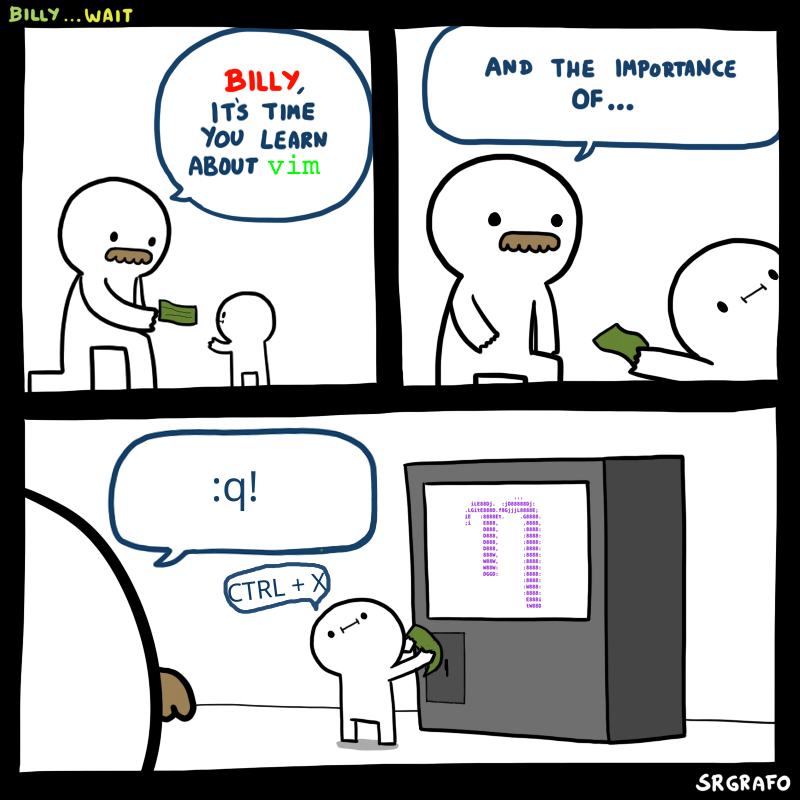Perhaps the ICP should appeal more to the everyday layperson…a gender neutral term coined in 1972, just seventeen years before the unrelated 1989 release of Belgian techno anthem, Pump Up the Jam.
David From Space
I’m David. I live in Tacoma, Washington. I do square foot gardening, home automation with Home Assistant, and have too many cats.
You think you saw me behind some ferns? You just might have!
- 0 Posts
- 28 Comments

 22·1 month ago
22·1 month agoSurely this one last permutation…

 8·1 month ago
8·1 month agoDon’t worry, if the bridge breaks there are two backup bridges conveniently located close by!
Alligators steal hats all the time?

 1·2 months ago
1·2 months agoNo, they don’t, I pulled it out of my butt. I rewrote my original draft and that slipped in. NVME wouldn’t make sense unless you were powering them up every few months for updates.

 3·2 months ago
3·2 months agoIf you buy your LTO drive new, then yes they rip you a new one, for sure! Buy it used…but it still will cost you a few hundred. Like I said, if money is not a concern. If losing the encryption key is a concern, then USB is still your best bet. Make two, keep them simple and unencrypted, stick em in two different safes, update them regularly. And print the documentation with pictures!

 6·2 months ago
6·2 months agoThe other thing is if I get hit by a bus and no one can work out how to decrypt a backup or whatever.
Documentation, documentation, documentation. No matter what system you have, make sure your loved ones have a detailed, image-heavy, easy to follow guide on how restorations work - at the file level, at the VM level, at whatever level you are using.
That being said, DVDs actually have quite a short shelf life, all things considered. I’d be more inclined to use a pair of archival strength USB NVME drive, updated and tested routinely(quarterly, yearly, whatever makes sense). Or even an LTO tape, if you want to purchase the drive and some tapes.
You can put your backups in something like VeraCrypt. Set an insanely long password, encoded in a QR code, printed on paper. Store it in the same secured location you store your USB drives (or elsewhere, if you have a security posture).
You may also consider, if money is not a concern, a cloud VPS or other online file storage, similarly encrypted. This can provide an easy URL to access for the less tech-savvy, along with secured credentials for recovery efforts. Depending on what your successors might need to access, this could be a very straightforward way to log into a website and download what they need in an emergency.

 51·2 months ago
51·2 months agoReceiving signal up in low earth orbit! Congrats!

 2·2 months ago
2·2 months agoSounds like you should get a basic low power linux box going!

 121·3 months ago
121·3 months agoWell mySQL certainly is not, I judge this to be a correct statement!

 13·4 months ago
13·4 months agoTom Goa’uld
…coho on the blowho’?
…I got nothing…

 13·5 months ago
13·5 months agoThere are a couple ‘Other - Please Specify’ fields I definitely filled out with ‘Do not do AI’.

 30·5 months ago
30·5 months agoAh, this looks like it’s a snap to use.

 21·5 months ago
21·5 months agoSupply chains are literally chains of suppliers, e.g. vendors. Your ‘simplest electronic product’ could absolutely be constrained by whom you choose to work with.
If your vendor locks you into buying from a certain source, and their vendor requires the same, and so on up the chain, how would you describe that dynamic to differentiate from a single vendor being the point of restriction?
To your point that the phrase didn’t exist, here are three supply-chain oriented papers that directly reference the phrase: This paper is exploring the social dynamics of buyers and sellers:
Lock-in situations in supply chains: A social exchange theoretic study of sourcing arrangements
Specifically, we believe that the examination of lock-in situations between a manufacturer and its supplier, i.e., instances where for all intent and purposes, one party is heavily dependent upon the other party, with few alternatives, under social exchange theory, can provide new insights into controlled self-interest behaviors (e.g., strategies) in on-going supply chain relationships.
This paper is about supply chains in plastic management, but the phrase is here:
Business models and sustainable plastic management: A systematic review of the literature
Barriers frequently mentioned were high costs, complexity of new systems, supply chain lock-in and low customer buy-in.
And here’s a paper about optimizing your supply chain where it is referenced as something to avoid:
Orchestrating cradle-to-cradle innovation across the value chain
This one even has a handy definition:
Supply chain lock-in: Contracts and strong dependencies with suppliers not supporting circularity (e.g., either due to non-willingness or lock-in in production facilities optimized for linear concepts).I suppose if you would like to be super extra pendantic Wikipedia does have you covered with “Collective Monopolistic Vendor Lock-in”.

 11·5 months ago
11·5 months agoTry another search engine: https://xo.wtf/search?q=what+is+supply-chain+lock-in

 2·5 months ago
2·5 months agoCan you share what the final desired goal is? It sounds like your goal is actually to provide your services to Bob securely over the internet, is that a fair description? You mentioned eventually grabbing a domain, how do you feel about publicly exposed services with authentication? For instance, I use authentik in front of Jellyfin and paperless myself for a little extra authentication juice.

 262·5 months ago
262·5 months agounrepentant nano gang rise up

I use https://sx.catgirl.cloud/ so I’m already primed to have anime catgirls protecting my webs.